We
take a look at what these three new contenders bring to the table in Asia’s
burgeoning food scene.
Seoul
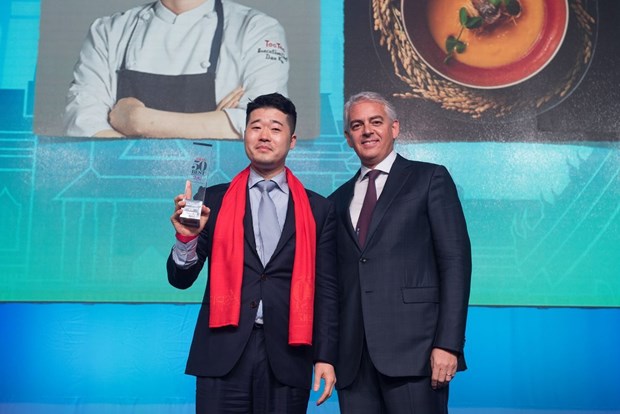
Chef Kim Dae Chun of TocToc, Seoul, Korea.
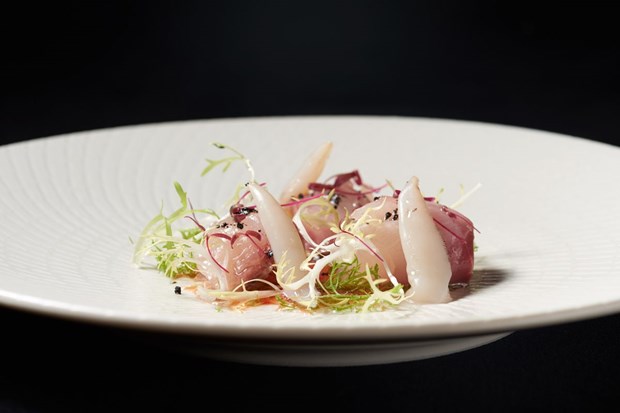
TocToc's sashimi creation with a Korean laver twist.

Chef Kim Sung Il of La Yeon, Seoul.
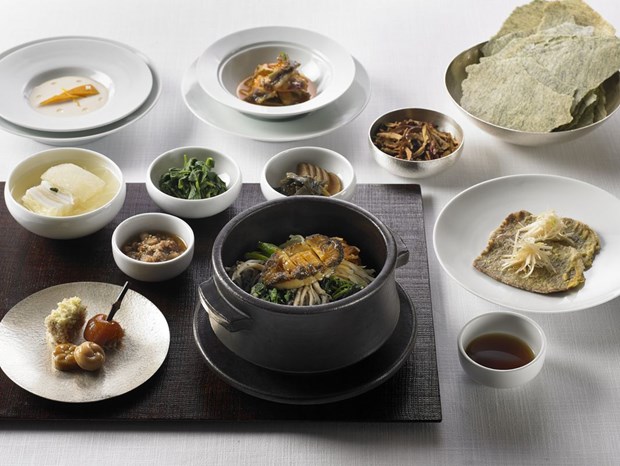
La Yeon's refined Korean dishes prepared with the best seasonal ingredients.
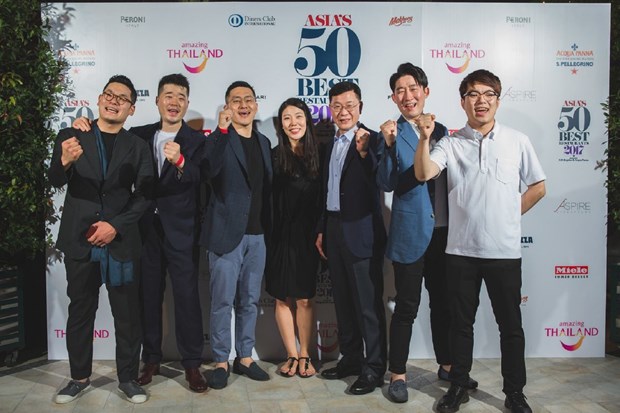
Winners from Korea at Asia's 50 Best.
Doenjang,
gochujang and ganjang – if you don’t know these terms already, pen them into
your culinary glossary immediately. For the explosion of interest in K-pop,
K-drama and K-everything else over the last decade has now spilt over to food,
giving Korean cuisine a long overdue nudge onto the global stage, say Seoul’s
top chefs and food critics.
Last
November, the South Korean capital city piqued the interest of global gourmands
with the launch of the inaugural Michelin Guide Seoul, elevating the city into
the same league as long-established dining destinations such as Paris, New York
and Tokyo. A further three Korean restaurants were feted in the 2017 Asia’s 50
Best Restaurants List released last month, while a fourth, TocToc, was
highlighted as the One to Watch.
“Seoul
has become a tourist destination more than ever before,” observes Julia Lee,
editor of Korea’s leading food magazine, La Main. The city’s allure is further
buffered by young Korean chefs such as Culinary Institute of America-trained
Jungsik Yim, who have boldly ventured beyond Korean shores to fly their flag
(Yim’s eponymous haute-Korean restaurant in New York holds two Michelin stars).
“Korean
food was always under-represented and there is a common misconception that
Korean food only has pungent, heavy flavours,” observes head chef Kim Sung Il
of La Yeon, one of the city’s two three-Michelin-starred restaurants, which
climbed up from 50th to 38th position on the Asia’s 50 Best Restaurants list
this year. “In Korea, family meals are sacred and meticulously prepared, and
food is a very central part of our livelihood. We have amazing festivities that
revolve around food – and this resonates with people from all cultures.”
And
visitors are finding much more to talk about than just kimchi. From the age-old
technique of fermentation to essential pastes (such as the aforementioned
doenjang, gochujang and ganjang – bean paste, red chilli paste and soy sauce,
respectively), diners and local chefs alike are “slowing moving away from the
stereotype where Korean food is only associated with grilling and barbecuing,
and seeing a bigger focus on our culinary roots,” he adds.
It
helps, too, that burgeoning demand is supported by bountiful supply, thanks to
the country’s robust agricultural sector. “We produce a lot of what we eat and
it’s all very seasonal. As a peninsula, we are also surrounded by seas, so we
also have access to an interesting variety of seafood that is exclusive to the
region,” says Kim, who uses 100 per cent of homegrown products and draws on
ancient Korean recipes in La Yeon.
For
chef Kim Dae Chun of Toc Toc, South Korea’s dynamic food culture has always
spanned street food to multicultural cuisine, and standards are at an all-time
high. The young drummer-turned-chef recently returned from culinary training in
Japan to set up his modern Korean eatery in Seoul, where he fuses Italian,
French and Japanese cooking techniques with local seafood.
“The
basic characteristic of Korean food is diversity. Young chefs are adding their
new perspectives and ideas, and the new generation of young foodies are open
minded to changes,” agrees chef Mingoo Kang of Mingles, ranked 15th on the
Asia’s 50 Best list this year.
La
Yeon’s chef Kim concurs: “Although I’ve been a chef for almost 30 years, I’m
still discovering new ways with food, and a good part of the process is about
listening to what other people think is Korean food, and to find something new
in the old.”
Taipei
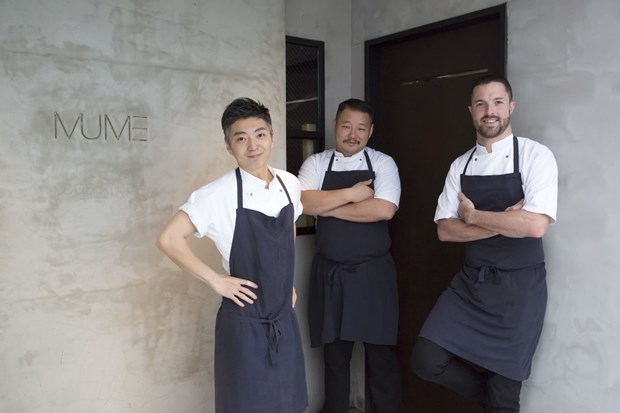
Richie Lin, Long Xiong and Kai Ward are co-owners of Mume, Taipei.

Mume in Taipei is a modern restaurant centred on Taiwanese ingredients.
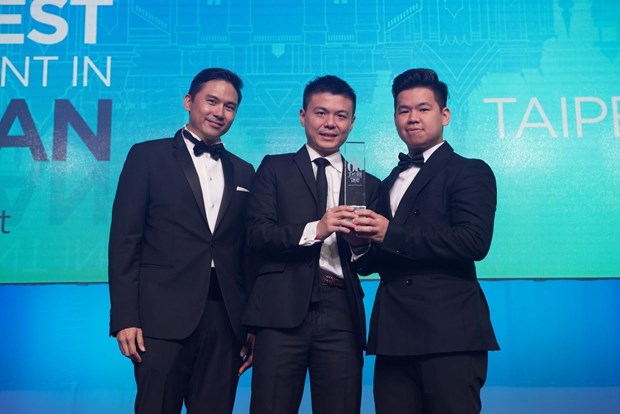
Zor Tan, Creator of RAW Taipei & Sous Chef of Restaurant ANDRE (centre) and Alain Huang, Head Chef of RAW Taipei (right) at the Asia's 50 Best Awards Ceremony in Bangkok.
Taiwanese
chef Andre Chiang may have helped to put Singapore firmly on the global
culinary map, but he’s just as proud that his native Taiwan is now stepping
into the limelight.
“I
think it’s about time. Among all the Asian countries, from Japan to Korea,
China, Thailand, and Vietnam, no one has really talked about Taiwan,” says
Chiang, whose Taipei restaurant Raw by Andre catapulted from 42nd to 24th place
on the Asia’s 50 Best Restaurants list this year. “From the people, to the
hospitality, the landscape and the produce – we have it all.”
In
total, there were three Taiwanese restaurants on the rankings this year,
including Le Mout by Chen Lanshu, named Asia’s Best Female Chef for 2014 by the
Asia’s 50 Best Restaurants academy, and newcomers Mume, a modern restaurant
centred on Taiwanese ingredients.
The
latter, incidentally, was set up by three non-Taiwanese – Hong Kong-born Richie
Lin, American Long Xiong and Australian Kai Ward – all so enraptured by the
territory’s many draws that they left stints in feted restaurants such as
Copenhagen’s Noma and Sydney’s Quay in 2015 to set down new roots in Taiwan.
“I
don’t think Taiwan is suddenly starting to be good. It’s always been good and
people are now just realising it,” says Ward. “Given its proximity to Hong Kong
or Shanghai and other options around, travellers have tended to overlook
Taiwan. But people are always looking for the next new thing, and Taiwan, at
the same time, has expanded its dining options beyond street food in the last
few years.”
Subtropical
climes and warm ocean currents make historically agrarian Taiwan all the more
conducive to the growth of lush vegetation and two or three rice harvests per
year.
“As
an island, there are a lot of fruit and vegetables that you can’t get
elsewhere,” says Xiong. Citing this year’s number one-ranked restaurant Gaggan
as an example, he adds: “In Bangkok, you see chefs not from there doing
interesting things that are not specifically Thai. This could be a direction
that Taiwan will grow in, where people bring in interesting ideas that are not
necessarily Taiwanese cuisine, but using all the products that Taiwan has to
offer – exposing the world to Taiwan and Taiwan to the world.”
Bangkok

Suhring's salt meadow lamb, with seasonal beans, speck, and aromatic herbs.
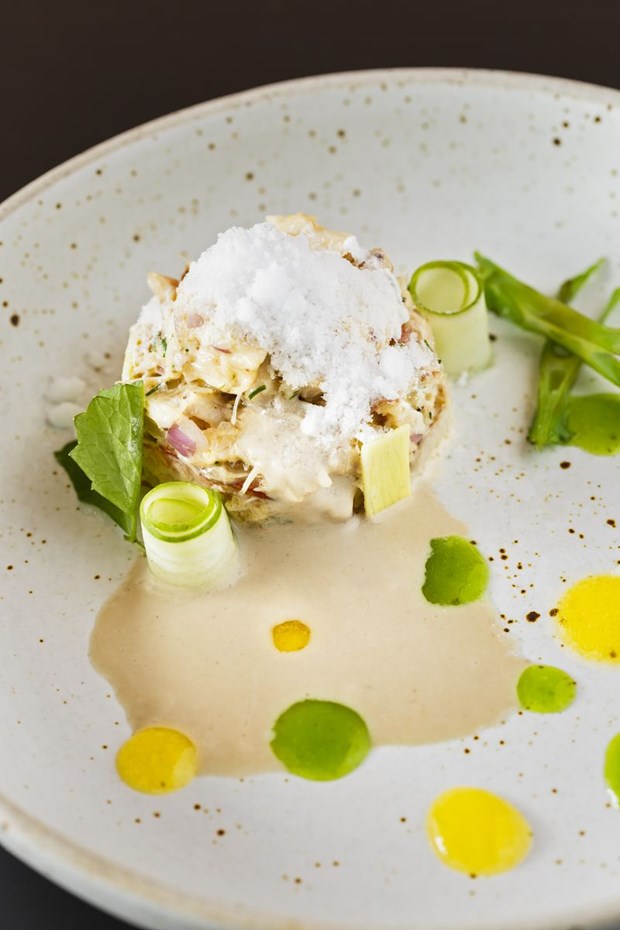
German-born twin brothers Mathias and Thomas Suhring, of Bangkok's Suhring.

Chef Thitid Tassanakajohn of Bangkok's Le Du, which debuted at 37th place on the 2017 Asia's 50 Best list.
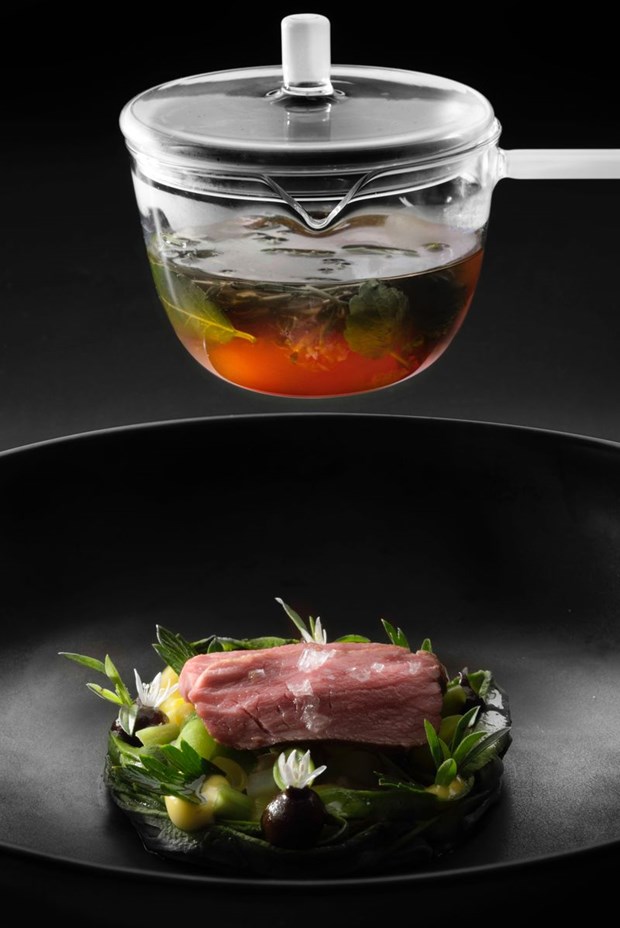
Le Du's creations uses ingredients from local farmers.
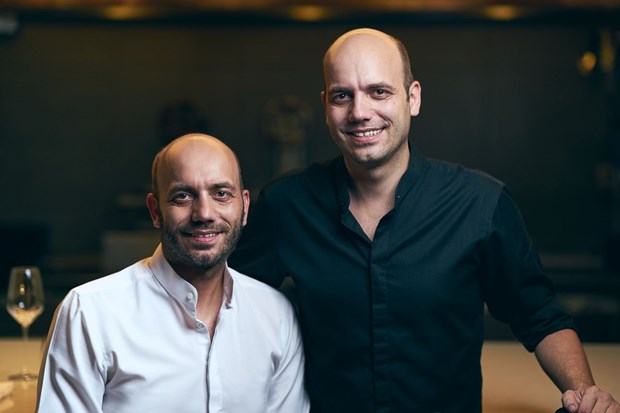
Contemporary German restaurant, Suhring, ranks 13th on the Asia’s 50 Best Restaurant list.
Diners
have even more reason to smile in the Land of Smiles. Long a destination for
its street eats, Bangkok’s fine dining scene has undergone a recent renaissance,
and can be said to now stand shoulder to shoulder with other popular Asian
cities.
Four
of the 10 new restaurants on the Asia’s 50 Best Restaurants list this year are
found in the Thai capital. Bangkok-based progressive Indian restaurant Gaggan
holds the top spot on the list for the third year running and Thailand is now
home to nine listed restaurants – the same number as that of popular
frontrunners such as Japan, China and Singapore. With murmurings of the
Michelin Guide unveiling a Bangkok edition growing stronger by the day, the
stream of foodies channeling into the city will only grow, say observers.
“Bangkok
is a travel hub for the region so people have always stopped here and are
always looking for good food,” says Dylan Jones, co-owner of Bo.lan, a new
entrant on the Asia’s 50 Best Restaurant rankings this year. But over the last
five to 10 years in particular, he’s seen gourmands increasingly divert from
glitzy hotel restaurants to small, owner-operated establishments.
Jones
chalks the restaurant boom down to better access to quality produce – both
local and imported – and the wider pool of foreign talent that has been lured
to Bangkok, as well as local talent that have returned home after cutting their
teeth in leading restaurants overseas. “The overall consciousness of what good
food has grown substantially,” he says.
“Customers
in Bangkok are very much open to new concepts,” says German-born twin brothers
Mathias and Thomas Suhring. After cooking at Lebua for eight years, the brothers
decided to remain in Bangkok to set up their maiden independent venture,
contemporary German restaurant Suhring, which made it onto the Asia’s 50 Best
Restaurant list in 13th place after just a year of operations. “When we arrived
in 2009, finding the good products was a challenge. Now we discover great new
local products from boutique farmers all the time,” they share.
“Tourists
to Bangkok may know us for our pad thai, som tum and tom yum goong, but we are
working very hard in order to level up the gastronomic cuisine of Thailand. We
have so many other varieties of Thai food and also international cuisine,” says
Thai tourism minister Kobkarn Wattanavrangkul, citing The Royal Project – a
movement started by the late Thai King to connect rural Thai farmers with urban
demand – as an initiative edging the restaurant industry forward.
But
the support must go both ways, adds young Thai chef Thitid Tassanakajohn. The
menus at his casual restaurant Baan and its fine dining sister outlet Le Du
(which debuted at 37th place on the 2017 list) bear short write-ups on the
local farmers he works with. “Five years ago, no one paid farmers a lot of
money: chicken is chicken, pork is pork and beef is beef. But when people
realise that there are things like free-range and antibiotic-free meats, and
are willing to spend, then restaurants can continue to support these farmers.”
Still,
some chefs are cautious about having too much of a good thing. “Honestly, I’d
like to see the growth of the restaurant scene slow down a little, with more
focus on quality and consistency as opposed to ‘bigger, faster and flashier’,”
says Jones. Seeing more local chefs cook local food and more regard for the
environment are two other points on his wishlist.
As
to whether Bangkok will soon outshine other Asian cities as the premiere stop
on any regional food trail, Jones counters: “I don’t really think we should be
looking at our food scenes as being in competition. These days there is a real
community spirit in the food industry and we can all work together with the
common goal of constantly trying to improve the quality on offer and towards
reducing our impact on the environment globally.”
“That
said, it all starts locally,” he adds.
By Debbie Yong/ The Peak Magazine